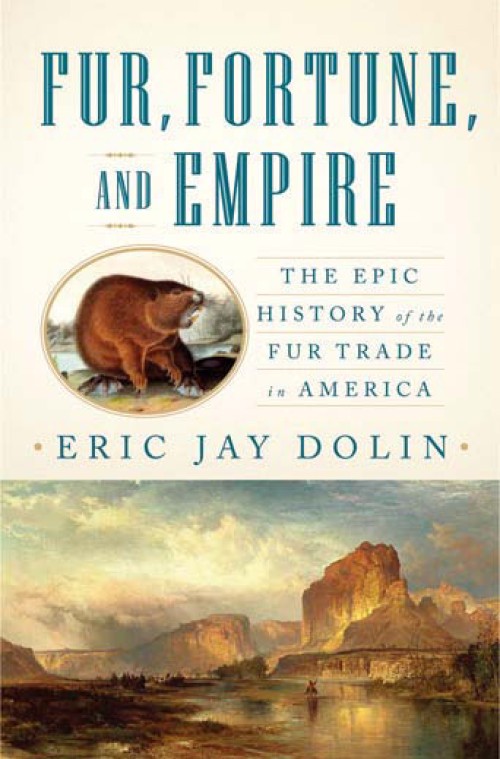by Eric Jay Dolin
W.W. Norton and Company, 2010
If you’re going to get a casual reader interested in a 442-page history of anything, you’d better have an engaging subject matter. Fortunately for Eric Jay Dolin, the fur trade is inherently interesting. Love the industry or hate it, it stimulates a response in people. Combine the interesting subject matter with underreported historical insights and you’ve got the recipe for a successful nonfiction book.
Fur, Fortune, and Empire makes the point that the America we know today wouldn’t exist without the fur trade. For instance, without beaver pelts to subsidize their settlement, the pilgrims wouldn’t have survived in Plymouth. Many cities across the Northeast – from Springfield, Massachusetts to Augusta, Maine – started as fur-trading posts and are in their present locations because of the matrix of wetlands and rivers that provided the furs to support them. Fur trappers led the western expansion of America; certainly Europeans would have ended up colonizing the entire continent even without the fur trade, but they wouldn’t have done it in the patterns, or at the speed, or in the manner in which they did were it not for furbearing animals and the trappers who chased them.
Dolin writes like a historian, which is to say that the book is not exactly a page turner. He’s thorough, though, which is the key to any history book. And the information is balanced, insightful, and surprising. The Indians are portrayed in a clear-eyed way: both as victims of European colonialism and participants in the rampant exploitation of the continent’s fur resources. White trappers of that era get a similar treatment: they were exploitive business men who presided over the near extermination of many furbearing animal species, yes, but like real human beings, they were multifaceted characters. For instance, we learn about the “Rocky Mountain College,” where mountain men would meet on long winter evenings to debate the issues of the day – a far cry from the East coast cliché that held that mountain men were monosyllabic brutes who traipsed around with purchased Indian squaw brides. (Not that this cliché isn’t without some truth.)
The diversity found in the Indians and mountain men was reflected in the fur industry they sustained. We learn that the Hudson Bay fur company was a pioneer in wildlife conservation – they used a one-year-on, two-years-off quota system that ensured a sustainable harvest of beavers in present day Canada. This same company also instituted a scorched-earth campaign in other parts of the continent, where they turned to ecological genocide in an effort to create a beaver-free buffer around their fur holdings in the American Northwest, but you get the idea that Dolin isn’t trying to create heroes, or villains, or victims, he is just trying to be true to the facts/anecdotes as he found them. By avoiding a judgmental retelling of the history, a reader feels that he or she is getting the straight dope of what really went on.
Dolin stays far away from contemporary squabbles between trappers and PETA types. This history starts in colonial days and ends at the dawn of the 20th century – a time frame known in naturalist circles as the “age of extermination.” In some ways it’s unfortunate that he didn’t keep going, as the 20th century was, for many species, an age of recovery. By ending the story with the fall of the beaver, we get no sense that today, beaver populations in many places have fully recovered and in some cases exceed pre-colonial levels. But, when you’ve already committed 442 pages to a thorough, engaging account of a 200-year timeframe, I suppose you have to draw the line somewhere.


